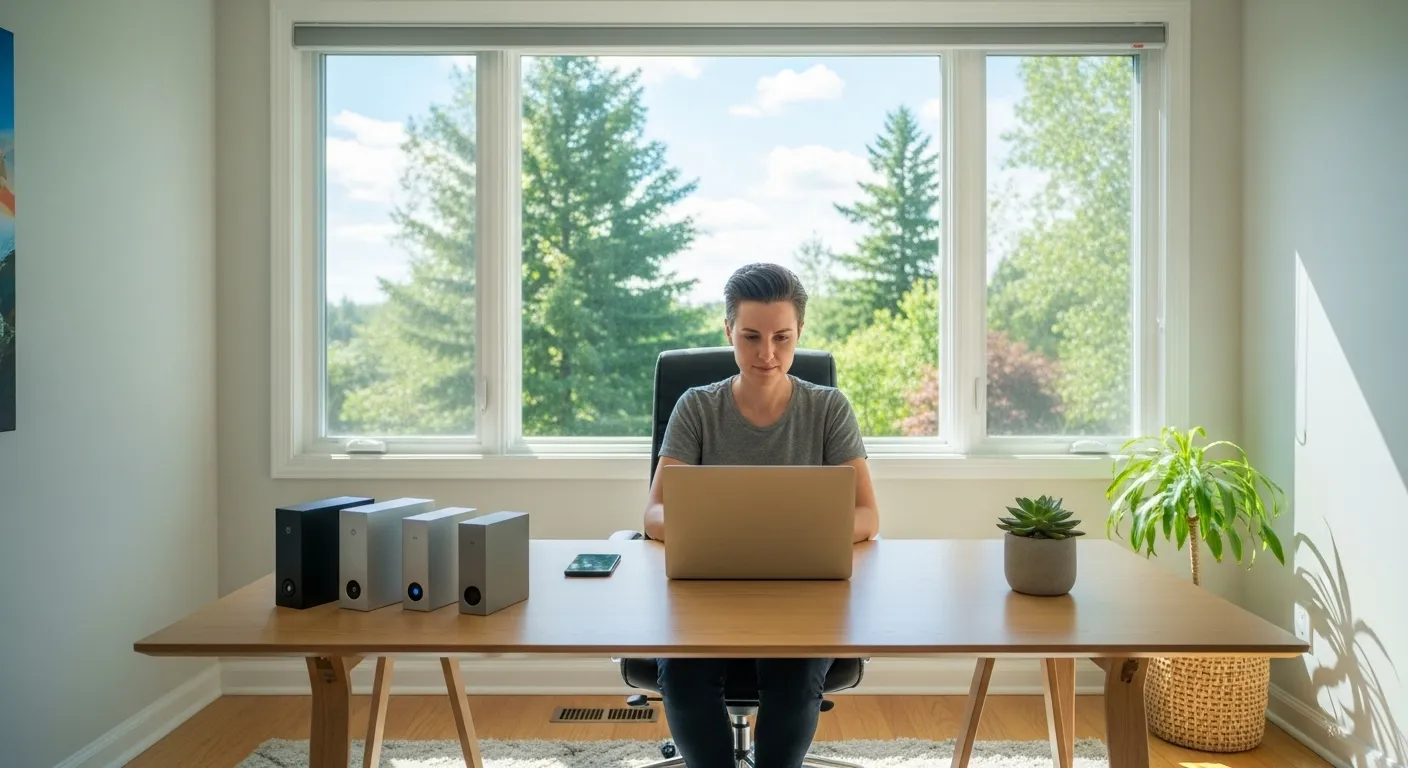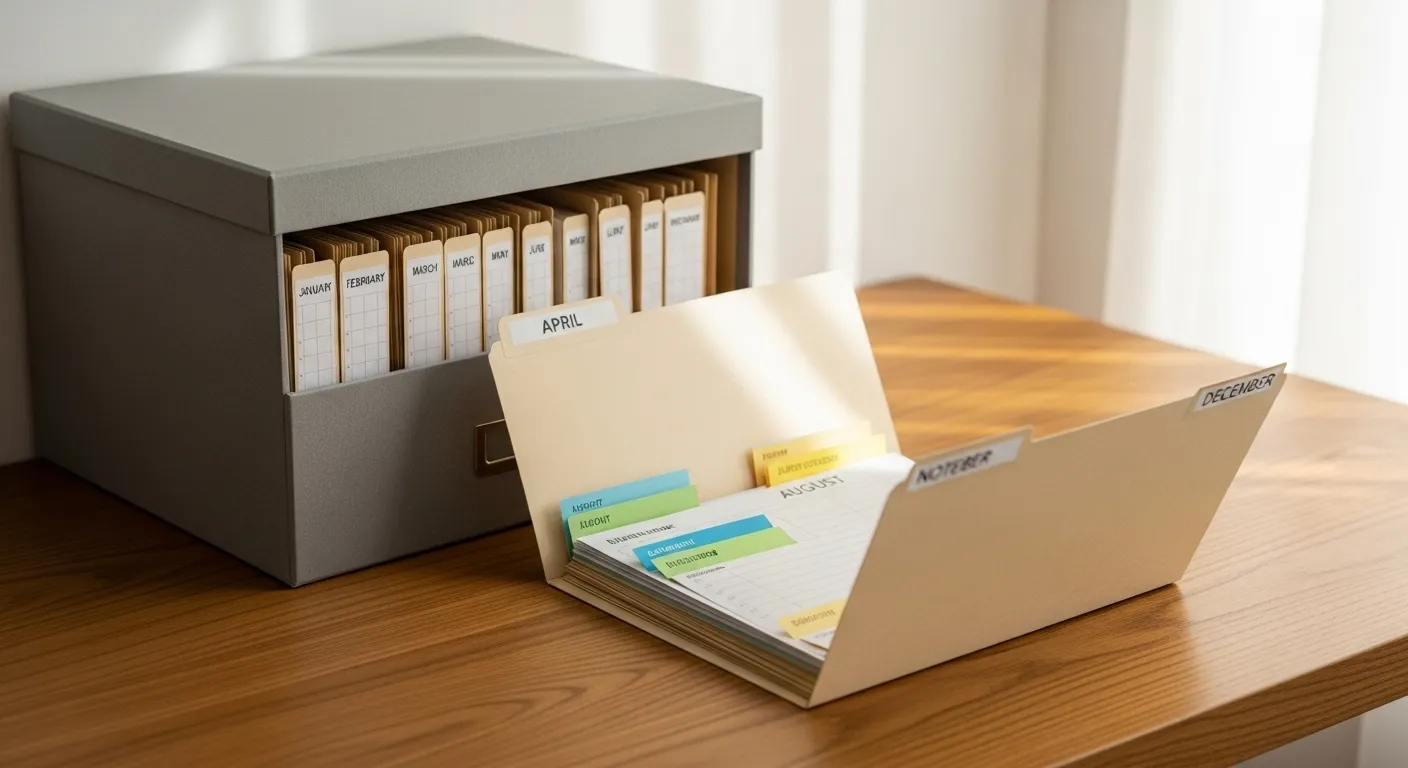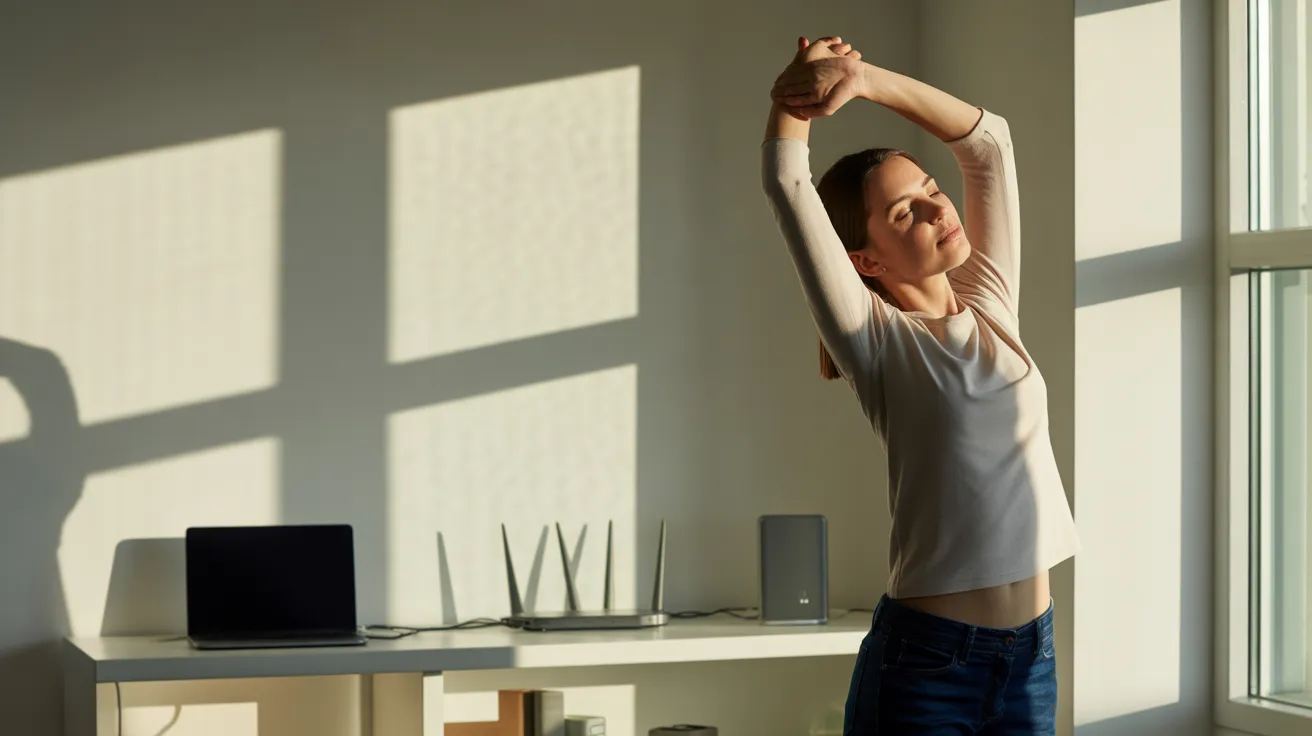
In the quiet moments, you decide to find that one photo. The one from that sun-drenched afternoon five years ago, the one that perfectly captures a feeling you want to revisit. You pull out your phone, and the search begins. You scroll past thousands of screenshots, blurry duplicates, and random pictures of your lunch. Ten minutes later, you’re frustrated, distracted by a notification, and no closer to finding the memory you were looking for. The moment is gone.
This experience is universal. We are the most documented generation in history, yet our memories are often buried in a digital avalanche. They’re scattered across old phones, forgotten cloud accounts, various social media platforms, and dusty external hard drives. This digital clutter isn’t just messy; it’s a source of low-grade, persistent anxiety. It’s the fear of losing something precious and the quiet stress of knowing a monumental organizational task is always waiting for you.
But what if there was a better way? What if you could build a calm, organized, and intentional home for your most cherished digital memories? Not just a backup, but a curated collection that brings you joy instead of stress. This is the idea behind the “Digital Capsule.”
This guide isn’t about achieving a perfect, sterile archive overnight. It’s about a mindful, realistic approach to digital photo organization. It’s about creating a system that honors your past and serves your future, allowing you to connect with your memories without the friction of digital chaos. We will walk through a step-by-step process to transform your scattered files into a meaningful digital legacy. This is your invitation to finally bring order to your digital life, one memory at a time.
📚 Table of Contents
- What Exactly Is a “Digital Capsule”?
- The Hidden Cost of Digital Clutter: Why Organization Matters
- The Blueprint: A 5-Step Guide to Building Your Capsule
- Step 2: The Curation Phase – The Joy of Deleting
- Step 3: The Organization Phase – A System That Scales
- Step 4: The Safeguarding Phase – The 3-2-1 Backup Rule
- Step 5: The Maintenance Phase – A Sustainable Habit
- Frequently Asked Questions (FAQ)
- The Joy of Rediscovery: Your Memories, Reclaimed
What Exactly Is a “Digital Capsule”?
Let’s start by defining our terms. A “Digital Capsule” is more than just a folder on your computer or a subscription to a cloud service. Think of it as a private, curated museum of your life. It’s a single, centralized, and secure place where your most important digital assets reside.
Unlike a simple backup, which is an indiscriminate copy of everything, a capsule is intentional. It contains the highlights, the moments that tell your story. It’s the digital equivalent of a treasured photo album, a box of old letters, or a collection of home movies—all organized and protected for the future.
Your capsule might include:
Core Memories: Key photos and videos from significant life events like weddings, births, graduations, and memorable travels.
Everyday Magic: Those small, candid moments that often mean the most—a child’s laugh, a beautiful sunset, a quiet morning with a loved one.
Important Documents: Scans of physical letters, children’s artwork, important certificates, or family recipes that carry sentimental value.
Audio and Other Media: A saved voicemail from a grandparent, a voice note capturing a funny story, or a short video of a pet.
The goal is not to save everything. The goal is to save what matters. By consciously choosing what to keep, you elevate the value of each item. This act of curation transforms the overwhelming task of organizing digital files into a meaningful process of reflection.
The beauty of the digital capsule concept is its flexibility. It’s a system you build for yourself, based on what you value. It’s a commitment to treating your digital memories with the same care and respect we’ve always given our physical keepsakes.

The Hidden Cost of Digital Clutter: Why Organization Matters
It’s easy to dismiss digital clutter as a minor inconvenience. We swipe past disorganized photos and ignore the “storage full” warnings. But this disorganization has a real psychological impact, contributing to a feeling of being overwhelmed and out of control. It taxes our mental resources in subtle but significant ways.
Scientists and psychologists often talk about a concept called cognitive load. This refers to the total amount of mental effort being used in your working memory. Every decision you make, from what to wear in the morning to how to respond to a complex email, adds to this load. When your digital environment is chaotic, you are constantly increasing your cognitive load without even realizing it.
Searching for a single file in a messy system forces your brain to make hundreds of tiny, rapid-fire decisions. Which folder is it in? What was it named? Which device was it on? Each question is a small drain on your mental energy. Over time, this leads to decision fatigue, making it harder to focus on the things that truly matter. The American Psychological Association notes that chronic stress, which can be exacerbated by feelings of disorganization and overwhelm, has wide-ranging effects on our well-being.
Furthermore, digital disorganization creates a constant, low-level anxiety. There’s the fear of a hard drive failing and wiping out a decade of irreplaceable photos. There’s the guilt of knowing you should be organizing your files but never getting around to it. This digital procrastination weighs on us.
Creating a digital capsule is an act of self-care. It’s about reducing cognitive load, eliminating a source of chronic stress, and reclaiming your mental energy. When you know your most precious memories are safe, organized, and easily accessible, it brings a profound sense of peace and security. It’s not just about clean folders; it’s about a clearer mind.

The Blueprint: A 5-Step Guide to Building Your Capsule
Building your digital capsule is a project, not a weekend chore. The key is to approach it systematically and with patience. Trying to tackle 15 years of digital photos in one sitting is a recipe for burnout. Instead, follow these five manageable steps. Go at your own pace, and remember that progress is more important than perfection.
Step 1: The Gathering Phase – Centralize Everything
The first step is often the most daunting, but it is essential. You need to get all your digital files into one place. This creates a complete inventory and prevents you from having to hunt through different devices and accounts later in the process.
Create a single, clearly labeled folder on your computer or a large external hard drive. Call it something like “Digital Capsule Staging Area” or “Photo Project – Unsorted.” This is your temporary workspace.
Now, begin the process of consolidating your files into this folder. Don’t worry about sorting or deleting anything yet—just focus on gathering. Look in all the common places:
Your current and old computers: Check your Desktop, Documents, Downloads, and Pictures folders.
Your smartphones and tablets: Connect them to your computer and transfer the entire camera roll.
Old storage media: Dig out those old external hard drives, USB sticks, and even CDs or DVDs if you have them.
Cloud services: Go through Dropbox, Google Drive, iCloud, and any other services you use. Download entire folders or use their desktop sync apps.
Social media: Most platforms like Facebook and Instagram have a tool to download an archive of all your photos and videos. The quality may not be original, but it’s better than nothing for photos that exist nowhere else.
This process can take time, especially if you have a lot of data. Be methodical. As you pull from each source, you might create a subfolder within your “Staging Area” (e.g., “From Old Laptop,” “From iPhone 11”) to keep track of what you’ve done. The goal here is simple: get it all in one place. Once everything is gathered, you have a complete, albeit messy, collection to work with. You’ve conquered the first major hurdle.

Step 2: The Curation Phase – The Joy of Deleting
This is where the magic happens. The “Gathering” phase was about quantity; the “Curation” phase is all about quality. Your goal is to sift through the raw material you’ve collected and keep only the photos and files that truly matter. This is the most personal and, arguably, the most rewarding part of creating your digital capsule.
The key to successful curation is to release yourself from the obligation to keep everything. We live in an era of digital abundance, where taking a hundred photos to get one good one is normal. It’s time to embrace the art of letting go.
Work through your “Staging Area” one folder at a time. To avoid getting overwhelmed, start with a small, manageable folder, like a single vacation or a specific month. As you look at each photo, ask yourself a few simple questions:
Does this image spark a specific, positive memory or emotion?
Is this a high-quality photo? Is it in focus? Is the lighting decent?
Of the 15 photos I took of this sunset, which one or two are the absolute best?
Your job is to be a ruthless, yet gentle, editor of your own life. Be aggressive in deleting the following:
Duplicates: Many files get copied accidentally over the years. Use your eyes or dedicated software to find and eliminate them.
Blurry or bad shots: Photos that are out of focus, poorly lit, or have a thumb in the corner can almost always go.
Near-identical bursts: You don’t need 25 photos of the same group pose. Pick the one where the most people have their eyes open and look happy, and delete the rest.
Random screenshots: Unless a screenshot captures a meaningful conversation or important information, it’s likely just clutter. Get rid of old directions, memes, and online shopping carts.
This process of making active choices about what to keep strengthens your connection to your memories. You’re not just mindlessly hoarding data; you are thoughtfully selecting the narrative of your life. It feels incredibly liberating to delete thousands of unnecessary files. Each deletion makes the remaining collection more valuable and easier to manage. Remember, the goal is to create a capsule you’ll actually want to look through, not a digital landfill you’re afraid to visit.

Step 3: The Organization Phase – A System That Scales
Once you have curated your collection down to the essentials, it’s time to bring order to the remaining files. A logical and consistent structure is the backbone of your digital capsule. A good system makes it effortless to find any memory you’re looking for and, just as importantly, makes it easy to add new memories in the future.
The most effective and widely recommended method for digital photo organization is a chronological, folder-based system. It’s simple, intuitive, and doesn’t rely on any specific software that might become obsolete.
The structure looks like this: YEAR > MONTH > EVENT.
First, create a main folder for your capsule, perhaps named “Photo Archive” or “Family Memories.” Inside this folder, create a separate folder for each year (e.g., “2020,” “2021,” “2022”).
Inside each year’s folder, you can either place event folders directly or create monthly subfolders first. For most people, adding monthly folders provides a helpful extra layer of organization.
So, inside “2023,” you would create folders like “01-January,” “02-February,” and so on. Using the number first ensures they always appear in the correct chronological order.
Finally, inside each month’s folder, create folders for specific events or subjects, naming them clearly. For example, inside “2023 > 08-August,” you might have folders like “Beach Vacation,” “Sarah’s Birthday Party,” and “First Day of School.”
For an even more robust system, consider adopting a consistent file naming convention. While renaming every single old photo is a massive task you can skip, you can start this habit for new photos moving forward. A great format is YYYY-MM-DD_Event-Name_001.jpg. For example, `2023-08-15_Beach-Vacation_001.jpg`. This ensures that even if files get moved out of their folders, they will still sort chronologically and contain descriptive information.
This structured approach is the core of sustainable digital organization. It takes some effort to set up initially, but once it’s in place, maintaining it becomes a simple and quick habit.

Step 4: The Safeguarding Phase – The 3-2-1 Backup Rule
An organized collection of memories is wonderful, but it’s also vulnerable. A single hard drive failure, a house fire, a theft, or a ransomware attack could wipe out your entire digital capsule. That’s why a robust backup strategy is not optional—it’s the most critical step in this entire process.
The gold standard in data protection is the 3-2-1 Backup Rule. It’s a simple concept recommended by cybersecurity experts and data professionals worldwide. It provides redundancy and protects you from virtually any single point of failure.
The rule is as follows:
Have at least three total copies of your data.
This includes the primary copy you work with (your “live” digital capsule) and two additional backups.
Store your copies on two different types of media.
This protects you from a specific type of technology failing. For example, you could have one copy on your computer’s internal drive and another on an external hard drive. Relying on two external hard drives of the same make and model is riskier, as they could have the same manufacturing flaw.
Keep one copy off-site.
This is the most important part. If your house has a fire or flood, having two backups in the same room won’t help you. An off-site copy protects your data from a localized disaster. The easiest way for most people to achieve this is by using a reputable cloud storage or cloud backup service.
A practical example of the 3-2-1 rule in action for your digital capsule would be:
- Copy 1 (Primary): On your main computer’s internal or external hard drive.
- Copy 2 (Local Backup): On a separate external hard drive that you update regularly (e.g., weekly or monthly).
- Copy 3 (Off-site Backup): Automatically synced to a secure cloud storage service.
Setting this up provides immense peace of mind. You no longer have to worry about the “what ifs.” You can rest assured that the memories you’ve worked so hard to curate and organize are protected from almost any eventuality. This is the ultimate goal of any system for organizing digital files: security and accessibility for the long term.

Step 5: The Maintenance Phase – A Sustainable Habit
Your digital capsule is not a “set it and forget it” project. Just like a garden, it requires a small amount of regular tending to stay organized and useful. The goal of this final step is to build a simple, sustainable habit for processing new photos so you never have to face a massive organizational project again.
The key is to integrate the process into your existing routines. Don’t let new photos pile up on your phone or camera for months on end. Instead, schedule a recurring, low-effort “Capsule Check-in.” For some, this might be 15 minutes at the end of every week. For others, a 30-minute session at the start of each new month works better.
During your check-in, follow a mini version of the process you just completed:
1. Gather: Transfer all new photos from your phone, camera, and other sources to a temporary “Incoming” folder on your computer.
2. Curate: Quickly go through the “Incoming” folder. Delete the duplicates, the blurry shots, and the screenshots. Keep only the best.
3. Organize: Move the keepers into the correct folder within your digital capsule’s structure (e.g., into `2023 > 11-November > Thanksgiving Dinner`).
4. Safeguard: Ensure your backup system runs, capturing all the new additions.
By making this a regular, small habit, you keep the task manageable and prevent the buildup of digital clutter. It becomes a mindful ritual rather than a dreaded chore. This ongoing maintenance is what transforms your digital capsule from a one-time project into a living, breathing archive of your life. It ensures that the peace of mind and clarity you’ve worked to achieve will last for years to come.
Disclaimer: The information provided in this article is for informational purposes only and does not constitute medical or psychological advice. Please consult with a qualified professional for any health concerns.

Frequently Asked Questions (FAQ)
As you embark on your digital organization journey, some practical questions are bound to arise. Here are answers to some of the most common ones.
How do I even start if I have over 50,000 photos? It feels too overwhelming.
The key is to not try to boil the ocean. Start small and build momentum. Do not start with the oldest photos from 2004. Instead, start with the present. Take all the photos from last month, and run them through the Gather-Curate-Organize process. The feeling of successfully organizing even a small batch is highly motivating. Next month, do it again. Once you have a handle on the present, you can start tackling the past, one year at a time, whenever you have a spare hour.
What’s the best way to handle videos, which take up so much space?
Videos should absolutely be part of your digital capsule, but they require special consideration due to their size. Be even more ruthless in your curation of video files. Keep the truly meaningful clips—a baby’s first steps, a heartfelt wedding speech—and delete the rest. For longer videos, consider using simple software to trim them down to just the essential moments. When it comes to storage, you might consider keeping your core photo capsule on one drive and your larger video archive on a separate, larger external drive to manage costs and backup times.
What about privacy and security when using cloud storage?
This is a valid and important concern. When choosing a cloud provider for your off-site backup, prioritize services with a strong reputation for security. Look for features like two-factor authentication (2FA), which adds a critical layer of security to your account, and end-to-end encryption, which ensures that only you can access your files. Research different providers and read their privacy policies. For highly sensitive files, you might also consider encrypting them yourself before uploading them to the cloud.
How can I incorporate photos from my spouse, partner, or other family members?
Creating a shared family archive is a wonderful goal. The easiest way is to create a shared cloud folder (using a service like Google Photos, iCloud, or Dropbox) where family members can contribute their photos from specific events. Designate one person as the “capsule keeper” who, on a monthly basis, downloads the curated best photos from that shared album and integrates them into the main, permanent digital capsule. This keeps the primary archive clean while still allowing for easy collaboration.
Should I use AI-powered photo management software?
AI tools can be incredibly helpful, especially for the curation phase. Software that can automatically identify duplicates, group similar photos, and even tag people and places can save you a significant amount of time. However, it’s best to use these tools as an assistant, not a replacement for your own judgment. Rely on AI to do the heavy lifting of finding duplicates, but make the final curatorial decisions yourself. Always build your foundation on a simple folder structure, as software can become outdated, while a good folder system is timeless.

The Joy of Rediscovery: Your Memories, Reclaimed
Creating your digital capsule is a profound investment in your personal history. The immediate benefit is a sense of order and peace of mind. The long-term reward, however, is far greater. It’s the joy of rediscovery.
Imagine, years from now, wanting to find a photo of your child’s first bike ride. Instead of a frantic, frustrating search, you navigate to a single folder: `2024 > 05-May > First Bike Ride`. And there it is. The moment is instantly accessible, ready to be enjoyed and shared. Imagine being able to easily assemble a slideshow for a milestone birthday or a graduation, pulling curated highlights from across the years in minutes, not days.
This project frees your memories from their digital prison. It transforms a chaotic archive that causes stress into a curated collection that brings joy. It is an act of preservation, ensuring that your story—and the stories of those you love—are protected and can be passed down. Digital files are fragile, but with an intentional system, they can become a lasting legacy.
You don’t need to be a tech expert or a professional archivist to do this. You only need the desire to honor your past and a willingness to start. The journey begins not with a grand overhaul, but with a single, simple step.
Here are three small things you can do this week to begin building your digital capsule:
- Create Your “Staging Area.” On your main computer or an external drive, create one new folder. Give it a clear name like “Digital Capsule Project.” This is now the destination for everything. That’s it. Step one is done.
- Schedule 30 Minutes. Look at your calendar for the coming week and block out a single 30-minute appointment with yourself. Label it “Photo Organizing.” Committing to a specific time makes it real.
- Tackle One Small Batch. When your scheduled time arrives, don’t think about your entire collection. Just grab the photos from your phone from the last 30 days. Drag them into your staging area, delete the obvious junk, and file the keepers into a new, properly named folder. Experience the small victory of a clean and organized month.
By starting small, you build momentum. You prove to yourself that this is not an impossible task, but a manageable and deeply rewarding one. Begin today, and give yourself the incredible gift of your own story, beautifully told and safely kept.






